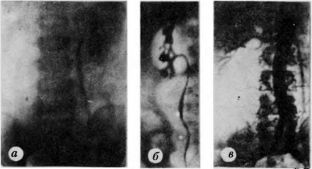Nephrogenic or renal hypertension is a type of arterial hypertension, in which high blood pressure is caused by pathological conditions in the organs of the urinary system and their vessels. The development of nephrogenic hypertension threatens the patient with dangerous complications that can even lead to death. Since the rise in pressure is accompanied by the appearance of a characteristic clinical picture, it is extremely important to pay attention to early symptoms and diagnose the pathology in a timely manner. About the methods of diagnosing renal arterial hypertension tells estet-portal.com.
Renal arterial hypertension: how to diagnose the disease
The diagnostic algorithm for suspected renal arterial hypertension is quite complex. The diagnostic process consists of several stages, the main purpose of which is to clarify the cause of the increase in blood pressure. It is also important to clarify the severity of vascular lesions and, in particular, the renal artery, as this directly affects the choice of patient treatment tactics. Since arterial hypertension can develop as a result of a number of reasons, it is important to include in the diagnostic algorithm not only laboratory and instrumental methods, but also differential diagnosis of the disease.
Renal arterial hypertension:
- laboratory methods for diagnosing renal arterial hypertension;
- instrumental methods for diagnosing renal arterial hypertension;
- differential diagnosis of renal arterial hypertension.
Laboratory methods for diagnosing renal arterial hypertension
Laboratory methods for diagnosing renal arterial hypertension are aimed not only at confirming the nephrogenic nature of the disease, but also at clarifying the functional state of the kidneys. For this purpose, the following analyzes are carried out:
- general blood test: nephrogenic hypertension is characterized by erythrocytosis as a result of hyperproduction of erythropoietin by the affected kidney;
- general urinalysis: in the urine can detect protein in a small amount, erythrocyturia is characteristic and less often leukocyturia;
- biochemical blood test: characteristic changes may occur with the development of chronic renal failure;
- Rehberg's test confirms chronic renal failure.
Instrumental methods for diagnosing renal arterial hypertension
The main task of instrumental methods for diagnosing renal arterial hypertension is to confirm damage to the kidney vessels, as well as to clarify the nature of nephropathy. The following instrumental diagnostic methods are used:
- angiography – the most informative method for diagnosing renal arterial hypertension, which can be used to assess the condition of the affected vessels;
- Excretory urography is performed as part of an angiographic study to assess the structural and functional state of the kidneys. Characteristic is the delay of the contrast agent on the side of the lesion and the asymmetry of the kidneys;
- ultrasound examination of the kidneys with dopplerography makes it possible to assess the condition of the renal arteries. There is a violation of blood flow through the affected vessels, signs of nephrosclerosis on the side of the lesion, compensatory hypertrophy of the opposite kidney;
- radioisotope scintigraphy allows to determine the secretory function of the proximal tubules, some anatomical and functional features of the kidneys;
- CT and MRI make it possible to assess the condition of the aorta and its branches, also detects vascular diseases of the kidneys.

Differential diagnosis of renal arterial hypertension
Renal arterial hypertension must be differentiated from many other pathologies accompanied by high blood pressure. Primary hyperaldosteronism, Itsenko-Cushing's syndrome and disease, pheochromocytoma and thyrotoxicosis make it possible to distinguish characteristic changes in the hormonal background of the body from nephrogenic hypertension. Some neoplasms of the kidneys can produce renin and be accompanied by arterial hypertension, while changes in the main vessels of the kidneys are rarely observed. Coarctation of the aorta is typical for young patients, while high blood pressure is detected only in the vessels of the upper extremities. Hypertensive disease is characterized by an increase in blood pressure after physical and emotional stress, as well as the occurrence of hypertensive crises.







Add a comment